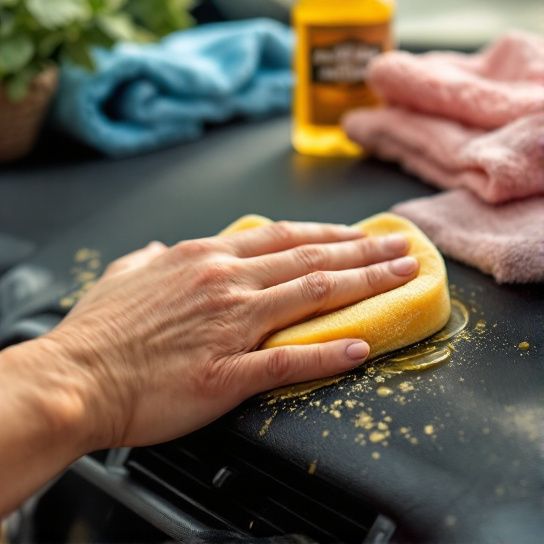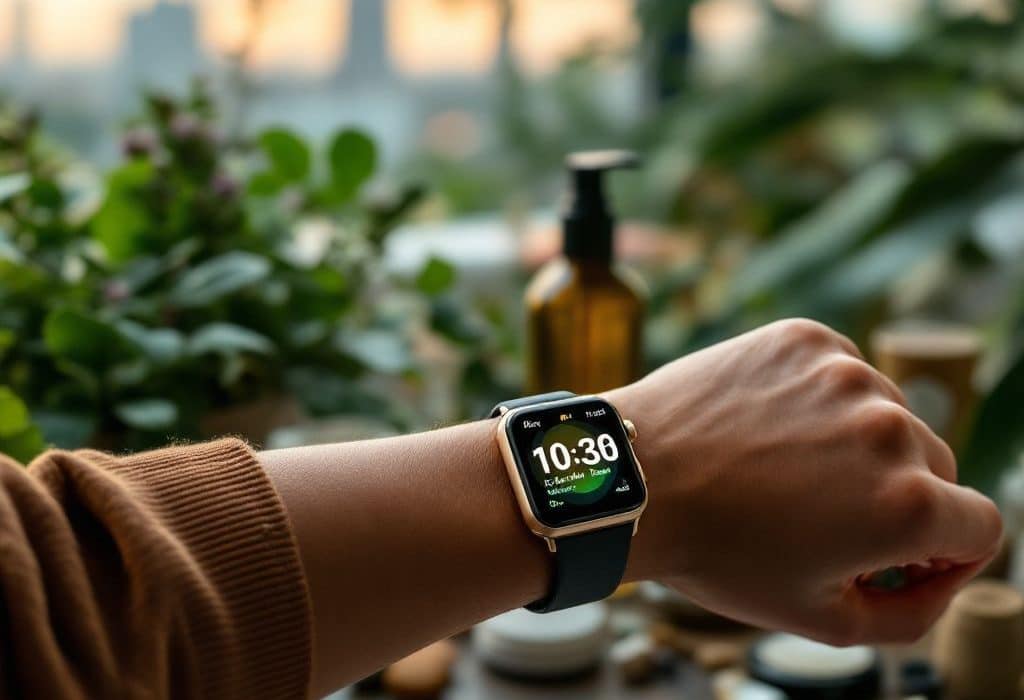Have you ever looked at your collection of natural beauty products and wondered if they’re actually doing what they promise? Let’s face it. Between serums, oils, creams, and the plethora of other concoctions claiming to enhance our skin, it’s easy to drown in a sea of options. But here’s where things get fascinating—what if I told you that wearable beauty tech is revolutionizing how we keep track of our skin health and beauty routines? It’s like having a tiny, dedicated skincare consultant attached to your wrist. Sounds cool, right?
What’s the Buzz About Wearable Beauty Tech?
To dive straight in, wearable beauty tech isn’t just about turning your wardrobe into something out of a sci-fi film. It’s combining the tech we’ve become so fond of—think Fitbits and Apple Watches—with our daily beauty regimes. More importantly, it provides insights we’ve been striving to understand better, like how effective our beloved natural beauty products genuinely are.
These devices have come a long way, moving beyond simple health trackers to become incredibly personal—and personalized—beauty allies. By utilizing skin tracking technology, these wearables can measure hydration levels, monitor UV exposure, and even detect stress indicators on your skin. They help redefine how we perceive the connection between health and beauty.
The Connection Between Skin Health and Beauty: More Than Skin Deep
We always hear about achieving that perfect glow. But what does that even mean? It turns out, achieving healthy skin is not just skin deep; it’s connected to your overall health. That’s where skin tracking comes into play. This type of monitoring provides you with data not only about your skin’s current status but also insights into your lifestyle’s impact on your skin.
Think of it this way. When you incorporate wearable beauty tech into your routine, it’s like having a dynamic report card for your skin health. Instead of guessing which natural beauty products bring you tangible benefits, you’ll have evidence-based insights right at your fingertips.
Get Technical: How Wearable Beauty Tech Works

Let’s peel back some layers and talk nuts and bolts. Wearable beauty tech incorporates sensors, software, and connectivity to provide you real-time data.
- Skin Sensors: These are placed in direct contact with your skin. They gather essential information such as hydration levels, pH balance, and oiliness.
- UV Detection: Monitors UV exposure, crucial for those obsessed with sun protection (and really, who isn’t?).
- Stress Levels: Through heart rate variability and other biosensors, these devices detect stress, which can directly affect skin conditions like acne and eczema.
Why Should You Care?
Right about now, you might be wondering, “Is this really worth my time and money?” The short answer is, yes. By using wearables designed specifically for beauty routines, you’re taking a proactive approach to understand your unique skin needs. It’s like getting the VIP treatment for your daily regimen.
Here’s another perspective: when your current natural beauty products can be directly linked to improvements (or declines) in skin health, imagine how much smarter your beauty choices will be, not to mention more cost-effective.
Transitioning from Passive to Proactive Skin Care
Most beauty routines are reactive. We see an issue, we search for a product, and we hope for the best. Wearable beauty tech flips this script by setting a new standard: proactive skincare.
Imagine waking up in the morning already knowing whether you need to adjust your moisturizer because your wearable told you your skin was a bit dry overnight. Sounds dreamy, right? Trust me. It is.

Making Wearable Beauty Your Own: Customization is Key
Everyone’s skin is different, and not all natural beauty products work the same for every person. Enter the magic of customization. Wearable beauty offers tailored recommendations based on your skins’ actual feedback.
Steps to Incorporate Wearable Beauty Tech:
- Research Your Product: Not all devices are created equal. Choose one that best fits your specific needs.
- Routine Integration: Make it part of your daily routine, much like brushing your teeth or washing your face.
- Trend Tracking: Regularly review the data and trends—notice any patterns worth addressing with your skincare products?
- Consultation Sync: Some devices allow direct data syncing with dermatologists or skincare consultants, enhancing your beauty advisement services.
The Role of Natural Beauty Products in Data-Driven Skincare
Increased awareness of clean, green beauty products has pushed natural beauty to the forefront over recent years. When blended with the capabilities of wearable beauty tech, you’ve got a potent combination designed to cater to your skin’s needs.

Noteworthy Natural Ingredients:
- Aloe Vera for soothing and hydration.
- Green Tea Extract for its antioxidant properties.
- Rosehip Oil for anti-aging benefits.
Picture this final thought: instead of stumbling blind in your skincare choices, your own body becomes the instructor, leveraging both technology and nature to achieve skin harmony.
Embracing Innovation Without Losing Tradition
Let’s have a moment of honesty—it’s easy to feel a bit skeptical when blending high-tech gadgets with traditional beauty practices. After all, the allure of natural beauty products is deeply rooted in ancient practices passed down through generations. But fear not.
Wearable beauty tech is about enhancing the understanding of those time-honored rituals rather than replacing them. It’s about bringing clarity and customization that reflect our increasingly dynamic lifestyles.
The Road Ahead and the Future of Beauty
It’s hard not to get excited looking ahead. Innovations in wearable beauty tech are unfolding quickly, and the promise is tantalizing. Consider advancements like integrating AI to offer even smarter suggestions based on personal skin tracking metrics.
In simpler terms, the future might just deliver personalized “beauty playlists,” combining specific natural beauty products with targeted lifestyle adjustments. If you’re seeking a lifestyle that’s as focused on refinement as it is on results, wearable beauty tech is a game-changer you don’t want to miss.
Ultimately, this isn’t just about devices or tracking—it’s about you harnessing technology to care for yourself on a whole new level, tuned precisely to your journey. So give it a try. Embrace the future. Trust me when I say your skin, and peace of mind, will likely thank you.
Frequently Asked Questions
What is the difference between “natural” and “organic” in natural beauty products?
Natural and organic are often used interchangeably but refer to different standards. Natural skin care products are formulated with ingredients sourced from nature, rather than synthetic ones. Organic products, however, insist that their natural ingredients meet specific organic farming standards, being grown without synthetic pesticides, fertilizers, or GMOs. While all organic products are natural, not all natural products are organic[5][1].
Do natural beauty products contain any synthetic chemicals or toxic ingredients?
Although natural beauty products aim to avoid synthetic chemicals, the term “natural” is not strictly regulated. This means products labeled as natural might still contain some synthetic ingredients. It is crucial to read the ingredient list carefully and look for certifications from organizations like the USDA for organic ingredients or cruelty-free badges to ensure the product meets your standards[3][5].
Are natural beauty products cruelty-free and sustainable?
Many natural beauty products are committed to being cruelty-free and sustainable. For example, brands like Harvest Natural Beauty are Leaping Bunny certified, ensuring their products are not tested on animals. Additionally, these products often use eco-friendly, fair trade, and organic ingredients, and follow sustainable business practices[1].
Can natural beauty products cause allergies or skin reactions?
Yes, natural beauty products can cause allergies or skin reactions. Natural substances like essential oils and plant extracts can be potent allergens. It is important to patch test products before using them fully and consult the ingredient list for known irritants. Even though a product is natural, it does not automatically mean it is hypoallergenic[5][3].
References

